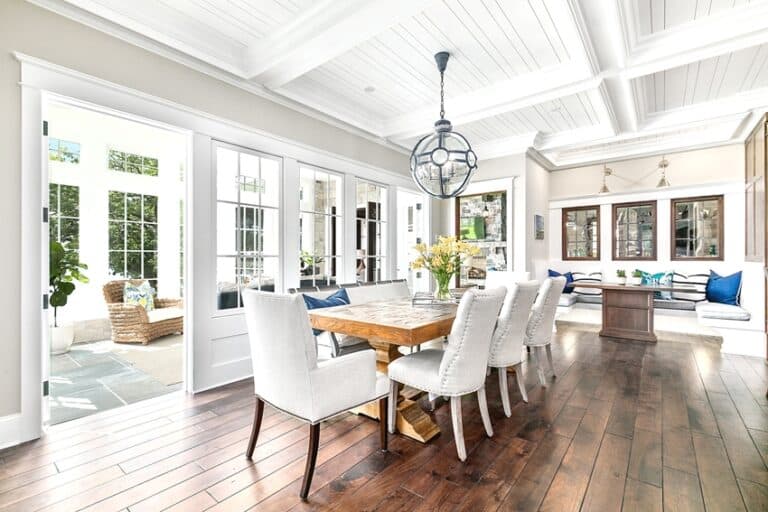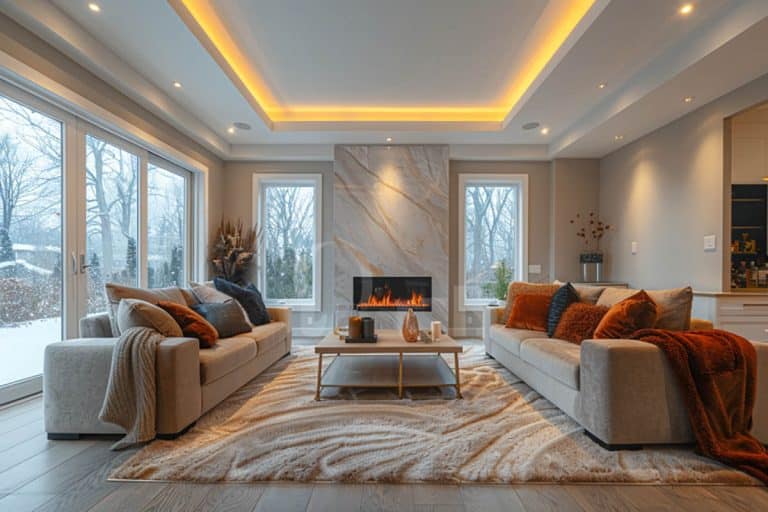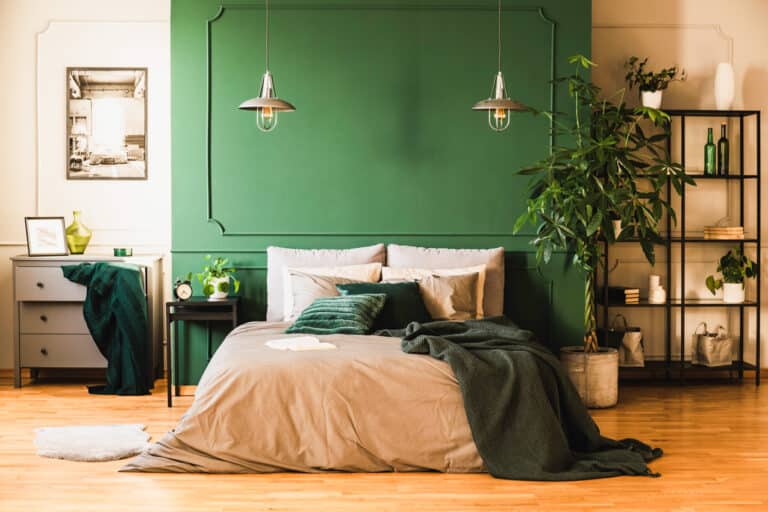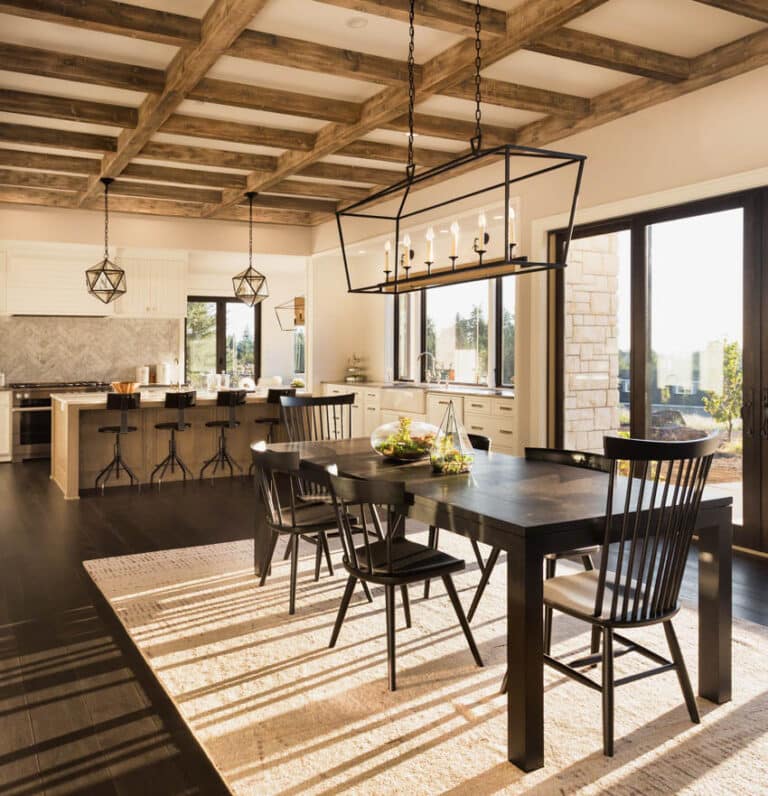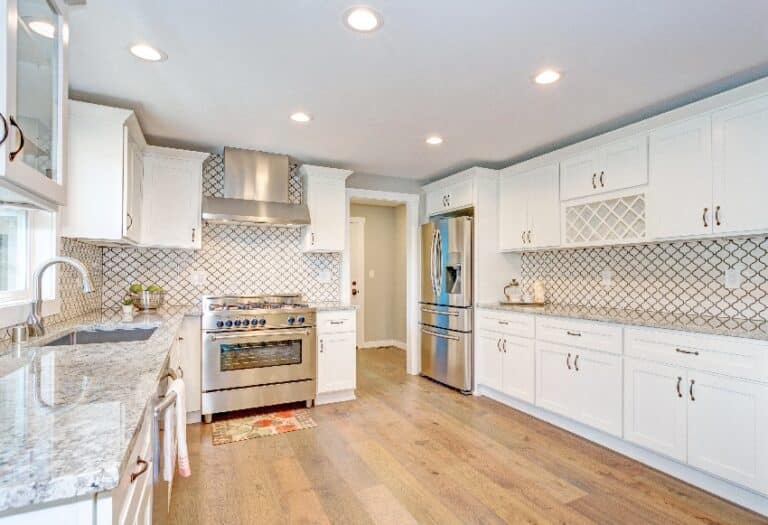Black Basement Walls (How to Create a Stylish Design)
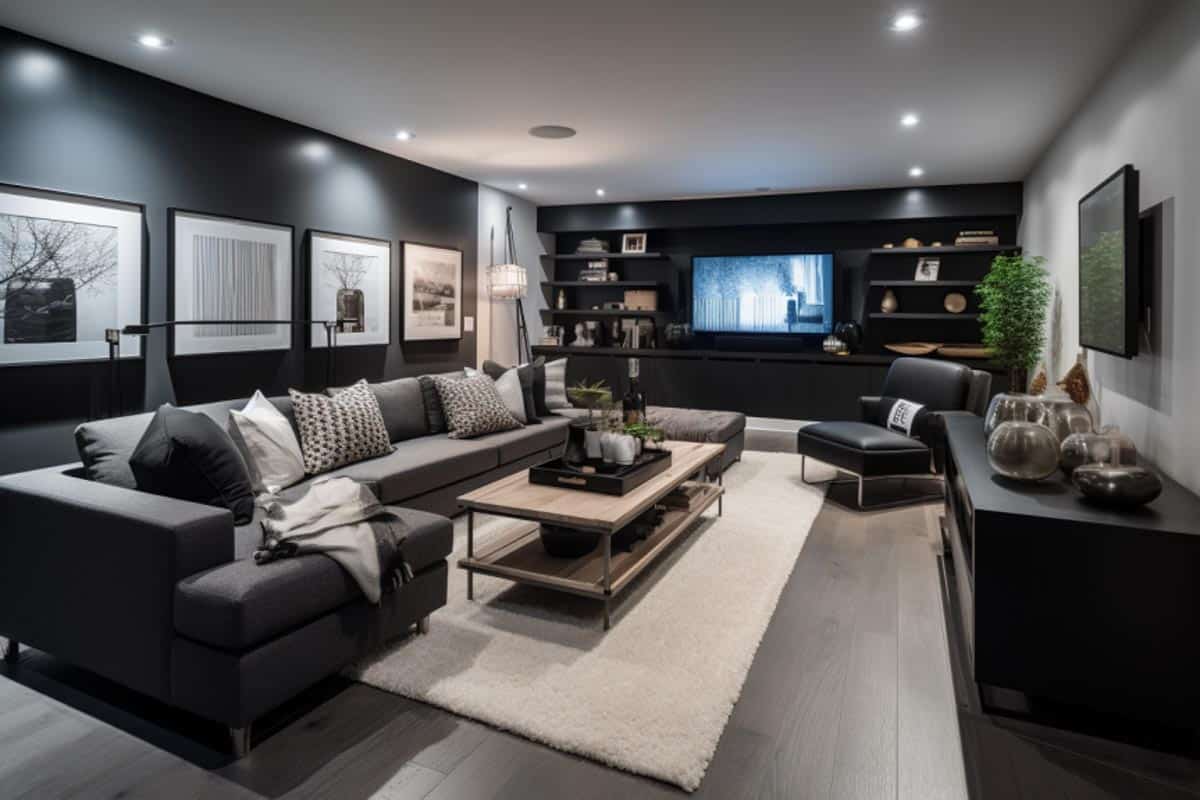
Like white, black was one of the first colors recorded and used thousands of years ago, as showcased in cave paintings during the Neolithic period. Today, the darkest color is gaining more popularity as the wall color can effortlessly create stunningly dramatic, large, and even welcoming spaces, a contradiction to the notion that dark colors make a room look smaller. This deviation is probably due to the better paint formulas available today and the good dissemination of knowledge that dark colors such as black actually recede and add depth to a space. Thus, the right design elements can make a room look more expansive.
Can You Paint The Basement Walls Black?
Choosing black paint for your basement walls is a preference that comes with its own pros and cons. But before weighing the benefits against the downsides, factors such as the shape of the room, the number of windows, the purpose of the room, and the paint type should be considered.
As the darkest color, it fully absorbs light and can make a room look gloomy and depressing. Artificial lighting can highlight featured sections of a room instead, and layered lighting can actually create a dramatic and sophisticated interior.
Basements are versatile spaces, and their function should primarily dictate the design. For basements used as laundry rooms or storage, it may not be a good choice to use black plants for the walls as light is essential to decreasing mold or mildew formation. If you plan to use black for a basement laundry area, make sure to use paint that’s mold and mildew-resistant.
In general, basements are the perfect rooms to color the black paint, as there are fewer basement windows and too many sources of natural light can diffuse and make a dark color look paler. A muted, dark color can look dull and depressing.
Painting Basement Walls Black
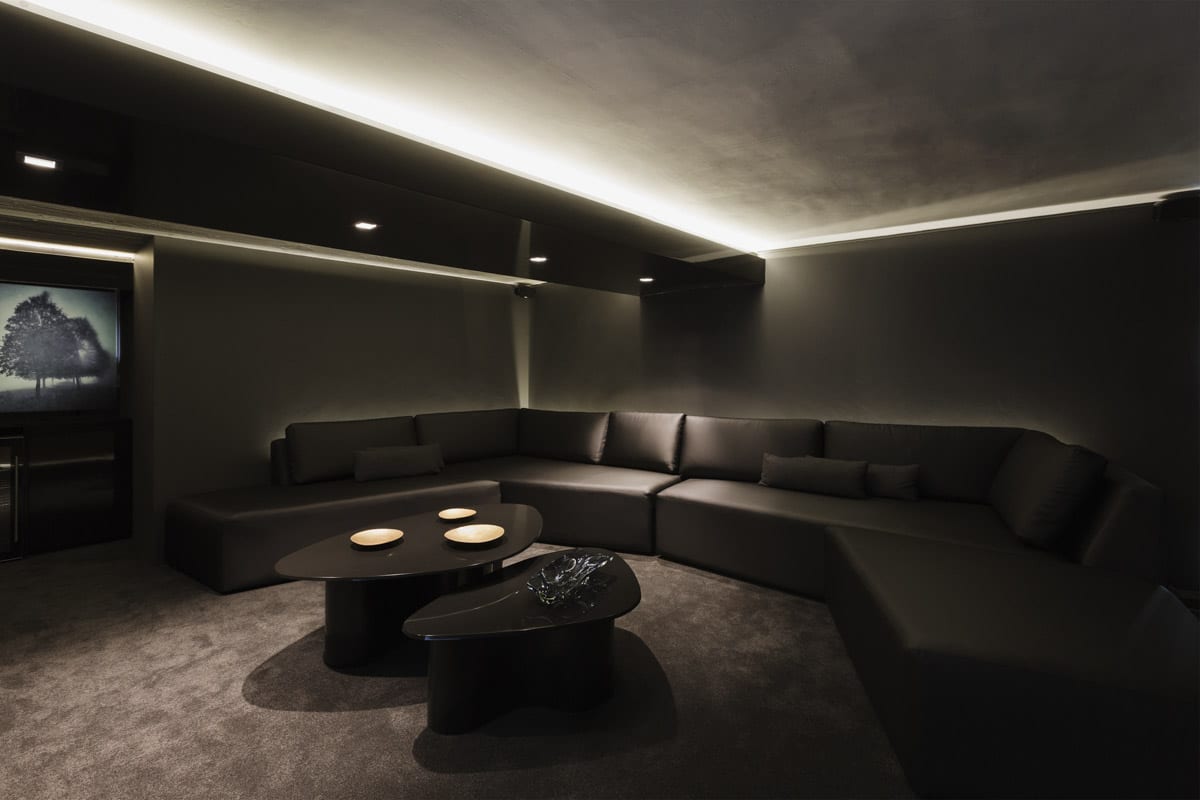
Since a functional basement is typically an afterthought, imperfections during renovations, especially for DIY projects, can leave the space with uneven walls or other structural and architectural mishaps.
If the inner edge of the first sheet of drywall butts against an uneven wall, or its other edge does not fall on the center of the stud, the board must be scribed to fit. – Popular Mechanics Complete Home How To, Albert Jackson and David Day
Ductwork, pipes, and other HVAC and mechanical equipment, such as furnaces, are found in the basement and can be painted a dark color along with the rest of the room’s surface to create a seamless and cohesive look.
Tricorn Black by Sherwin Williams, Black Jack by Benjamin Moore, and Noir by Valspar are top paint brands and variations to consider. One of the key factors in finding the right shade and color of black for a basement is knowing the LRV, or light reflective value, of your paint product.
Generally, the higher the LRV, the more light it reflects, while the lower the LRV, the more light it absorbs according to Shoreline Painting.
Black and White Basement
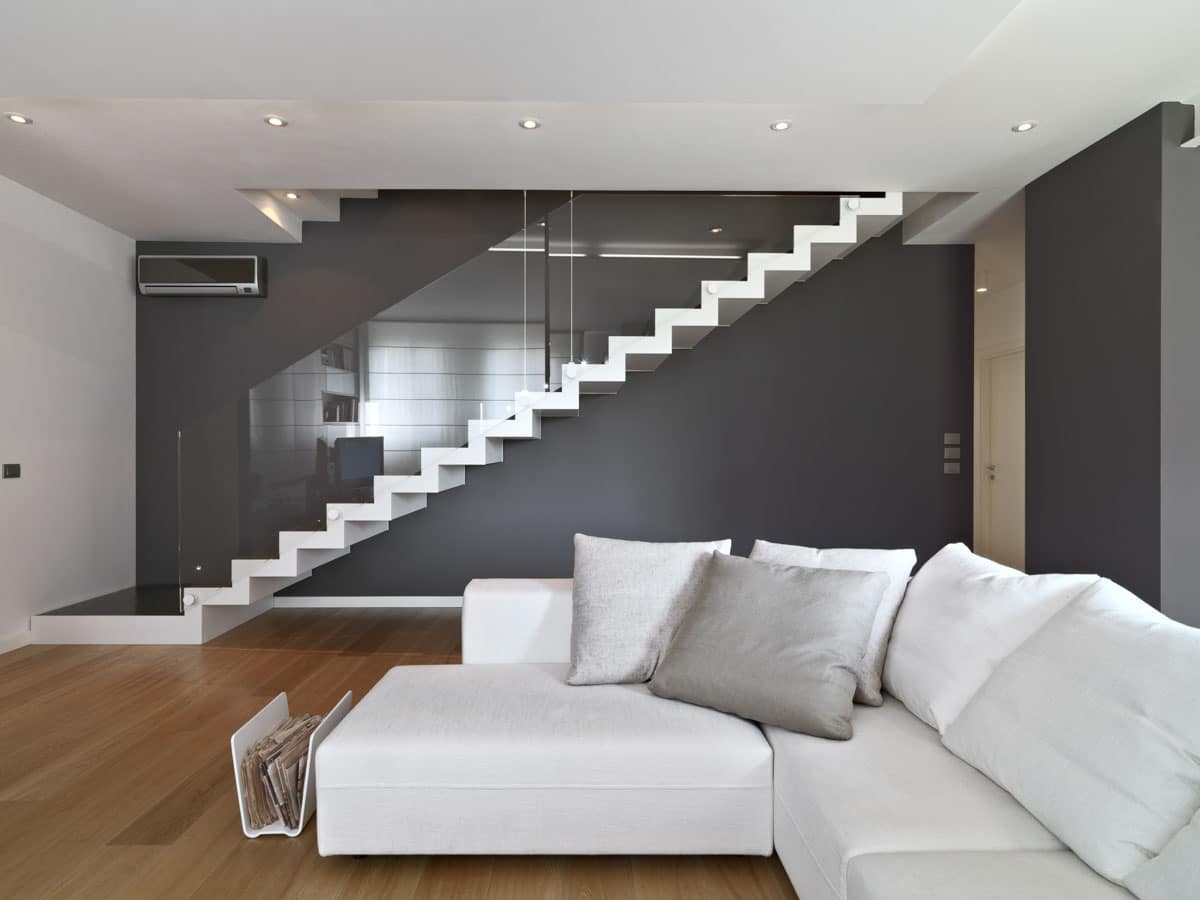
Contrast is the key factor that makes the colors black and white look good together and creates a balanced look in a basement. The neutrals are also timeless and versatile.
From traditional-style basements to minimalist themes, the black-and-white combination works with any interior style.
The pairing is also an opportunity to introduce bolder and more eye-catching colors. Neon colors and metals also work well with black and white.
While black and white is a versatile color palette, neutrals have become synonymous with minimalist movement due to the colors’ ability to create a streamlined look.
Black and White Design Ideas:
• Paint the ceiling black and the walls white, while grounding the basement space with stone tiles.
• Use white-colored stencil designs on a black wall.
• Recreate the retro-themed spaces for a basement wine bar with black-and-white checkered floors.
• Make a basement music and entertainment room cozier with an all-black ceiling-to-floor color, accented with white floating shelves or décor.
• Paint a section of the wall black to create a feature wall, and have the rest of the other walls painted white.
• A fireplace on a niched wall can be painted black to update the look into a more contemporary look. These details can help especially if the area looks empty and lacking any furniture items.
• Striped walls may not be for everyone but the color combination can be an interesting and unexpected feature wall for a bold and modern interior. Striped walls can either go horizontal or vertical.
Horizontal directionality can visually widen a section of the basement, while a vertical black-and-white striped feature wall draws the eyes upward.
• Two-tone walls to create interesting wall color. Paint the upper half of the basement wall white all the way to the ceiling and the lower half black. This way, the lighter color allows the space to look brighter and vertically larger.
The darker color, meanwhile, grounds the space and evokes a feeling of being secure and cozier. Create a transition element, such as a strip in between the neutrals in a different color, or installing molding.
Black Accent Wall Basement
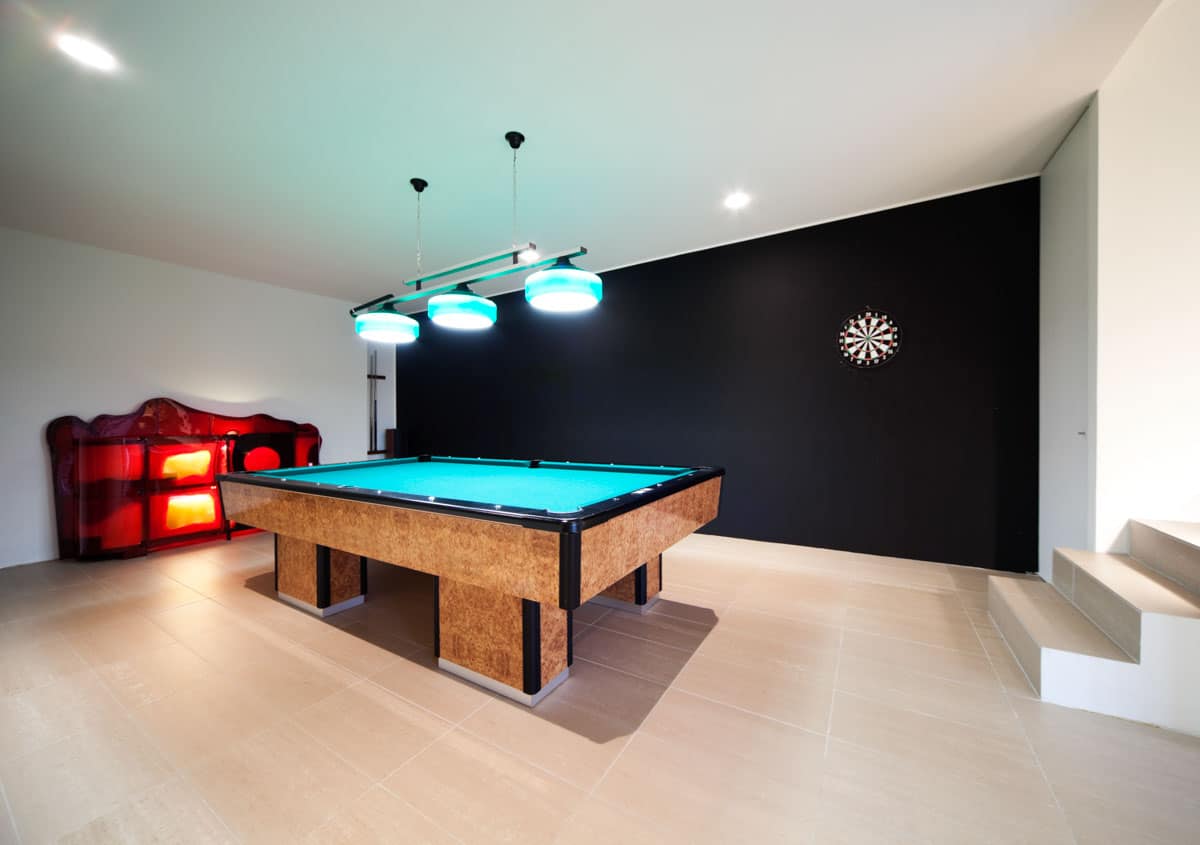
When finding a color that goes with any color, black is the perfect choice. The neutral tone can break up a monotonous color scheme or add depth to sections of the basement.
For accent wall ideas in basements, black is the perfect bold color that catches one’s attention, drawing the eyes to a feature décor or area in the room.
Accent Wall Design Ideas:
• Make the bed the focus of the room by extending the headboard vertically or horizontally with black paint.
• Use textured black paint to create that personalized look. The layered texture can have a suede or matte finish.
• Paint a section of a wall with black chalkboard paint. The space can be useful for writing down reminders or creating chalk art for the day.
While most chalkboard paints adhere well to most surfaces without primer, for a basement setting, a primer is recommended to ensure adhesion. Painting is much most cost effective then using large chalkboard products.
Moreover, primer helps fill in depressions, irregular details, or uneven surfaces. A putty filler may be needed to fill in larger holes or dents.
• A dark backdrop is an opportunity for bold and bright patterns. Graphic designs with geometric shapes such as hexagons or stripes can further elevate the accent wall.
• Use painter’s tape to create painted patterns on a wall. Two alternatives are to use stencils to create complex designs or put up wallpaper to add a touch of patterns and texture.
Basement with Black Ceiling and White Walls

The industrial theme of the 19th and 20th centuries has welcomed a style of exposed beams, trusses, and pipes in the ceiling. The visibility of utility lines is a practical choice, especially in basement areas, as maintenance and repairs are much easier.
Restaurants and trendy commercial spaces have designed exposed utilities that also add charm and uniqueness to the interior. Painting the ceiling black makes it more cohesive and can conceal imperfections.
Basements are commonly built with low ceilings, and black color can add depth as darker colors tend to recede. This makes the basement ceiling seem higher and provides an opportunity to add attractive lighting designs.
The light temperature to be used depends on the preferred mood and purpose of the basement. A basement used as a theater or entertainment room will typically have a warmer light that ranges from 2700 to 3000 kelvin. Read more about choosing between 2700k to 3000k at Waveform Lighting.
Meanwhile, when used as a home office or workspace, basement lighting with a black ceiling will benefit from a cooler light, usually ranging from 4000 to 5000 kelvin.
What Color Is Best For Basement Walls?

The best colors recommended for basements depend mainly on the use of the space, the natural light available, and personal preferences.
Light and neutral tones are accepted on basement walls, as they make the room look brighter since basements typically don’t receive much natural light. This maximizes the available light.
Bright and bold paint colors are typically reserved for accent walls, furniture, or home décor. These bold colors can easily draw the eye to a focal point, showcase piece, or architectural feature.
Dark colors such as black, blue, navy blue, and emerald green are trending basement wall colors and like bold and bright colors, they can be used as accent colors as well as primary colors.
Have you used black wall in your basement? Enter a comment below to share your home decor tips and what you like to use for accents in the basement. See more related content in our article about the best basement floor paint colors on this page.

